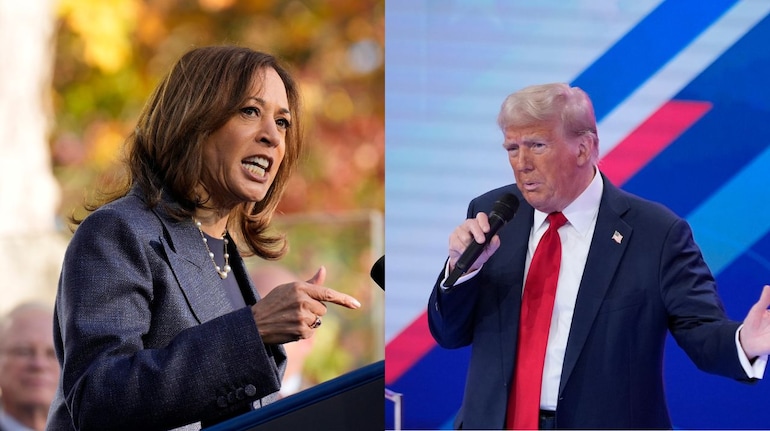



Will America get its first woman president, or will Donald Trump secure a second term as president? Most opinion polls point towards a dead heat, which is why a lot is riding on seven battleground states, which haven’t historically aligned with any of the two parties and could sway either way.
The seven states -- Arizona, Georgia, Michigan, Nevada, North Carolina, Pennsylvania and Wisconsin control 93 electoral college votes. Pennsylvania has the highest at 19, followed by Georgia and North Carolina with 16 each, and Michigan with 15. As per polls, neither candidate has a decisive lead in any of the states.
But what exactly are swing states, and why are they so pivotal in the electoral process and can make or braking a candidate's chances?
What are swing states?
Swing states, also known as battleground states, are characterised by their unpredictable voting patterns, often switching between Democratic and Republican candidates. These states often have a mix of demographic groups, varied economic interests, and differing cultural attitudes, leading to fluctuating voter preferences from one election to the next.
Why Swing states are pivotal in determining a winner?
Historically, swing states have played a decisive role in US presidential elections. In the Electoral College system, which determines the winner of the presidency, each state has a specific number of electoral votes based on its population. Candidates focus their campaigns heavily on swing states, where the margin of victory can be razor-thin. For instance, in the 2020 election, states like Arizona, Georgia, and Pennsylvania emerged as key battlegrounds, influencing the final result.
Factors that influence Swing State voters
Several factors contribute to the status of a state as a swing state. Economic conditions, demographic shifts, and key issues such as healthcare, education, and immigration play significant roles. Additionally, voter turnout and engagement can vary widely from one election to another, further impacting the outcomes in these critical regions.
Swing states often receive an influx of campaign resources, including advertisements, rallies, and personal appearances by candidates. This intense focus can shift public opinion and ultimately sway undecided voters.
Who has the lead in these crucial states?
Exit polls indicate that former US President Donald Trump is having a lead in six key battleground states just ahead of the upcoming US Presidential elections. According to New York Post, if these recent projections eventually hold then Republican Presidential nominee Donald Trump could end up securing 287 electoral votes. Trump is leading in North Carolina, Georgia, Arizona, Nevada, Michigan, Pennsylvania. Harris is leading in Wisconsin.
More than 70 million Americans have already cast ballots, according to the Election Lab at the University of Florida, below the record early-voting pace in 2020 during COVID-19, but still indicating a high level of voter enthusiasm.
Discover the latest Business News, Sensex, and Nifty updates. Obtain Personal Finance insights, tax queries, and expert opinions on Moneycontrol or download the Moneycontrol App to stay updated!
Find the best of Al News in one place, specially curated for you every weekend.
Stay on top of the latest tech trends and biggest startup news.